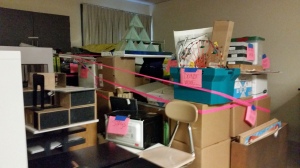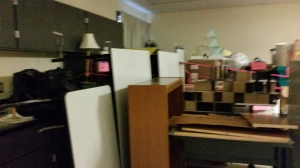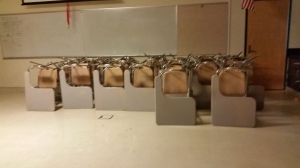Last year I used the crop duster problem in my precalculus class as an introduction to the eight math practices. I was very happy with the results, and found that my students were able to identify the practices readily throughout the rest of the year. After reflecting on the activity I decided I wanted to do some changes for this year.
One of the changes was to take away the coordinate axes in the picture , so the students had to think about how to impose a coordinate axes. We had a great discussion about various locations, discussing the pros and cons for each of those locations. Naturally the students decided to use the center of the circular field as the origin, but they were the ones that decided the location rather than being told.
A second change I wanted to do was to take away the questions. I didn’t want the students distracted by trying to solve the problem before the event understood what the situation entailed. Upon reflection, I wonder if I should also remove points P and Q. This would cause the students to realize at some point that they need those points labeled. Anyway, I gave them this information and picture:

After giving them the picture, we took some time to look at the information and determine what was known. After brainstorm eight as much as we could, we then look for possible usable relationships inherent in the problem. They initially balked at the idea saying, “We don’t know what the question is, so how can we possibly come up with relationships?” With a little prodding, they’ve really got into it. Here is a list of those brainstorms:

The third change I wanted to incorporate was to have students generate possible questions rather than being told the questions. By having the students do this, I was asking them to use math practice 2: Contextualize the situation.

Once we brainstormed the questions, we talked a little bit about how we would actually go about answering these questions. The really exciting part of this process is that once the students are given the questions they realize that they came up with most of them on their own AND had figured out how to go about solving the answer them. Awesome stuff!
What are some activities you have streamlined in order to get students to do more thinking and sense-making on their own without scaffolding?














 I had a long time reading list for this summer and I’m proud to say that I got many of those books read! A colleague of mine here at school and I read Carrol Dweck’s Mindset: The New Psychology of Success together. Basically we did a mini book club and we had some great discussions afterwards. I even got a chance to practice my do little note taking (but that’s for another post later this year).
I had a long time reading list for this summer and I’m proud to say that I got many of those books read! A colleague of mine here at school and I read Carrol Dweck’s Mindset: The New Psychology of Success together. Basically we did a mini book club and we had some great discussions afterwards. I even got a chance to practice my do little note taking (but that’s for another post later this year). One of the things we wanted to do at the beginning of the year was tried to assess where our kids were on the mindset scale. We found a great questionnaire on
One of the things we wanted to do at the beginning of the year was tried to assess where our kids were on the mindset scale. We found a great questionnaire on 







